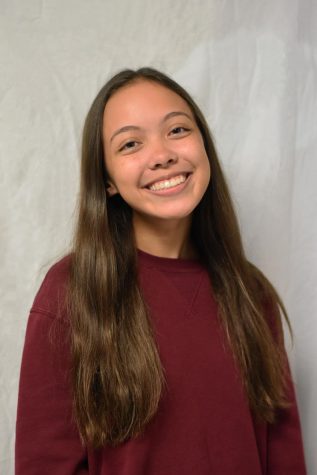Seeing in a different light
Engineering, design students transform classroom into giant camera obscura
October 7, 2019
Artists are given the assignment to take pictures of a mural in a school courtyard. Simple enough, right? It would seem so, but there is one issue: these artists have a disability that hinders their ability to move their hands, as if they have mittens on at all times.
Students of Ms. Lawrence’s engineering and design class were given this real world scenario and given the task to create a camera obscura, capable of being operated by these disabled artists.
Before embarking on the creation of obscura, the engineers were set to understand exactly how the contraption works. What other way to achieve this then turning an entire classroom into an actual pinhole camera?
Using only black plastic sheeting, some duct tape, and the window on the wall, engineering students created an enlarged simulation of the opening of a camera obscura.
“Essentially, we’re placing students inside of the camera itself” Ms. Lawrence said.
Once the creation of the giant obscura was completed, it was time to test it. With a flip of a switch, all the lights were turned off, engulfing the room in darkness. The only light came from a slim ray of sunlight emitting from the baseball-sized hole in the black sheeting. Senior Collin Kaiser held up a blank board to the light, trying to pick up the image of the world outside the blanketed window. After a few adjustments, a reversed image of the tennis courts outside the window finally came into a comprehensible view.
“When I put the board in the right place, it was like the gates of heaven had opened,” Kaiser said, “it was pretty exciting.”
Once students realized the projection revealed every moving object from the outside, some were quick to dash out and dance from outside the hole. Those on the inside watched in amusement as the projection of people’s blurred silhouettes waved their arms up and down in front of the window.
“I thought it was super cool getting to be upside down on the board,” sophomore Luis Lopez said. “The concept of a camera obscura seemed really odd at first, but after we actually made it come to life I understand it,” sophomore Luis Lopez said.
Now that the giant obscura is complete, students must create their own smaller camera obscuras that can also be operated using mittens, just like the hypothetical-users of the obscura.



